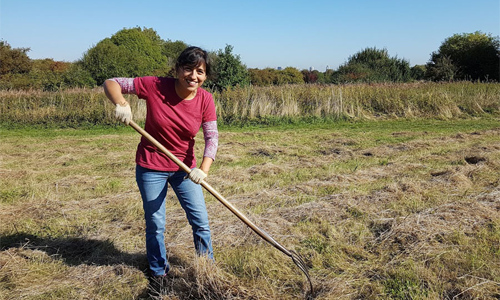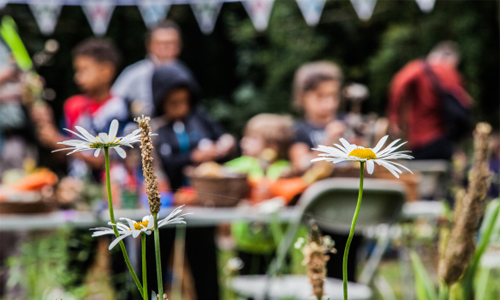Woodlands have been very much in the news these days and here in Sutton, several volunteer days have been spent at Queen Mary’s Woodland recently, and indeed the volunteers were back on site again on Tuesday 25th February to carry on with their work. Queen Mary’s Woodland is a small, shaded woodland which also has a small open meadow within the site.
This makes Queen Mary’s a potentially perfect habitat for species such as Speckled Wood (Pararge aegeria), White Admiral (Limenitis camilla) and Silver-Washed Fritillary (Argynnis paphia) butterflies, which are common to broad-leaved woodlands in southern England. Both latter species enjoy basking in the sunlit glades but require shady areas for laying their eggs.
The Silver-Washed Fritillary is one of the butterfly species we hope the see at Queen Mary’s Woodland in the upcoming summer months. This butterfly is named after the silver streaks that can be found on the underside of its wings. Both males and females are orange with dark spots. However, the female is much paler and has rounder wings, more defined spots and lack the vivid scent scales of the males.
The Silver-Washed Fritillary, like all butterflies, has four life stages. In its first stage, it starts as an egg which will hatch after about two weeks. They are typically laid in the crevice of an oak tree, close to Common Dog-violet (Viola riviniana). The next stage begins when the egg hatches to become a caterpillar and it will stay in this stage for around ten months. The main food source for the caterpillar is the Common Dog-violet and this lovely woodland herb is also the preferred food of the Pearl-bordered Fritillary (Boloria euphrosyne), Small Pearl-borded Fritillary (Boloria selene) and High Brown Fritillary (Argynnis adippe). The chrysalis is the penultimate stage of development, in which the caterpillar becomes suspended in a chrysalis resembling a withered leaf. In the final stage, a beautiful butterfly (the ‘imago’) emerges from the chrysalis, and despite several months of development to get to this stage, the Silver-Washed Fritillary will actually only live as an adult for around a month (and then the whole cycle begins again)!
The Silver-Washed Fritillary can be found flying from late June to the end of August, which will be when we carry out our surveys at Queen Mary’s Woodland to see which butterflies are living there. The Silver-Washed Fritillary can be found feeding on plants such as bramble (Rubus fruticosus agg.), Thistles (Cirsium spp. and Carduus spp.) and Water Mint (Mentha aquatic – generally less common in woodlands!).
Over the last 10 years, there has been a increase in both distribution and population of Silver-washed fritillaries [1], predominantly down to increased shading in woodlands as they have seen a reduction and even cessation in low intensity management, as highlighted earlier this year. Although we want to keep plenty of the woodland shady, we do want to increase the amount of semi-shade areas, which will encourage Common Dog-violets and bramble will be allowed to grow in sunny places, as these provide a great nectar source. We are hoping that by regular management of Queen Mary’s Woodland by the volunteers, we will see some of these lovely shade-tolerant butterfly species in the summer months to follow.
Eleanor Kirby-Green
SNCV Biodiversity Assistant









